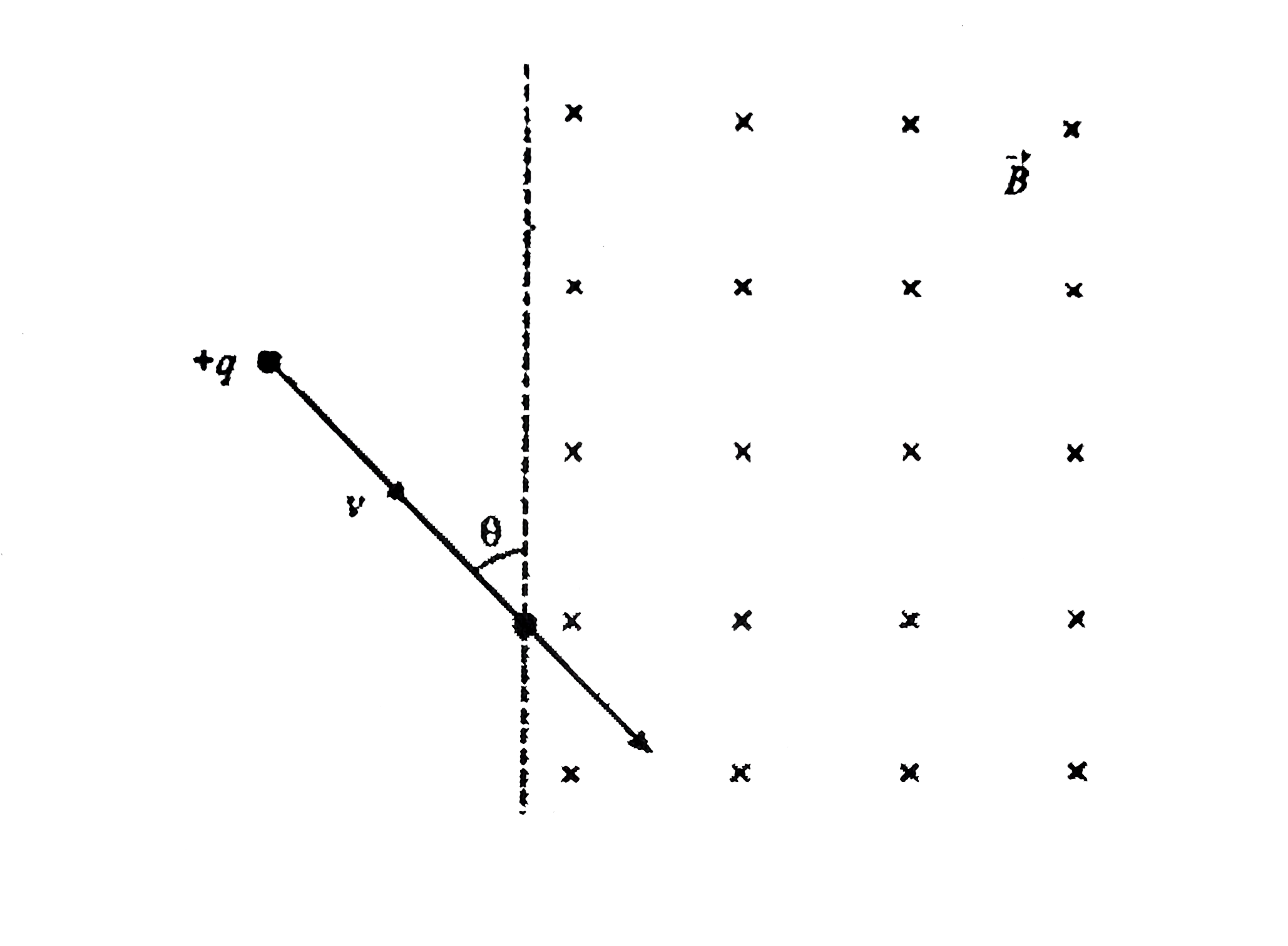(a) A charged particle having mass m and charge q is accelerated by a potential difference V, it flies through a uniform transverse magnetic field B. The field occupies a region of space d. Find the time interval for which it remains inside the magnetic field.
(b) An α-particle is acceleration by a potential difference of 104V. Find the change in its direction of motion if it enters normally in a region of thickness 0.1m having transverse magnetic induction of 0.1T.
(mα=6.4×10−27kg).
( c) A 10g bullet having a charge of 4μC is fired at speed of 270m/sec in a horizontal direction. A vertical magnetic field of 500μT exists in the space. Find the deflection of the bullet due to the magnetic field as it travels through 100m. Make appropriate approximations.
(a) K=12mv2−qV
v=√2qVm
sinθ=dR=dR=dmv/Bq=Bqdmv
(b) V=104V,q=2e=2×1.6×10−19C,
d=0.1m,B=0.1T,mα=6.4×10−27kg
K=12mαv2=qV=2eV
v=√4eVmα
R=mαvBq=mαv2eB
sinθ=dR=dmαv/B.2e=2eBdmαv
=2eBdmα√4eVmα=√emαV.Bd
=√1.6×10−196.4×10−27×10×0.1×0.1
=12
θ=30∘
( c) m=10g=10×103=10−2kg
q=4μC=4×10−6C
v=270m/sec
B=500μT=500×10−6=5×10−4T
d=100m
R=mvBq=10−2×2705×10−4×4×10−6=13.5×108m
sinθ=dR=10013.5×108=10−613.5
θ is very small.
Deflection =d22R (as proved in previous example) =(100)22×13.5×108=3.7×10−6m
Topper's Solved these Questions
Similar Questions
A proton is moving along the negative direction of X-axis in a magnetic field directed along the positive direction of Y-axis. The proton will be deflected along the negative direction of
View SolutionA charged particle having mass m and charge q is acceleration by a potential difference V, it files through a uniform tranverse magnetic field b.The field occupies a region of space d.Find the time interval for which it remains inside the magnetic field
(i) An α particle is acceleration by a potential difference of 104V. Find the change in tis direction of motiom if it enters normally in a region of thicknees 0.1 , having transverse magnetic induction of 0.1T(maplha=6.4×10−27kg)
(ii) a 10 g bullet having a charge of 4μC is fired at a speed 270ms−1 in a horizontal direction,A vertical magnetic field as it travels through 100 m .Make appropriate approximations
View Solution
Knowledge Check
A particle of mass m carrying charge q is accelerated by a potential difference V. It enters perpendicularly in a region of uniform magnetic field B and executes circular arc of radius R, then qm equals
A2VB2R2BV2BRCVB2RDmVBR
An α−particle is accelerated by a potential difference of 104V. Find the change in its direction of motion, if it enters normally in a region of thickness 0.1 m having transverse magnetic induction of 0.1 tesla. (Given: mass of α−particle 6.4×10−27kg).
View SolutionAn α−particle is accelerated by a potential difference of 104V. Find the change in its direction of motion, if it enters normally in a region of thickness 0.1 m having transverse magnetic induction of 0.1 tesla. (Given: mass of α−particle 6.4×10−27kg).
View SolutionAn α−particle is accelerated by a potential difference of 104V. Find the change in its direction of motion, if it enters normally in a region of thickness 0.1 m having transverse magnetic induction of 0.1 tesla. (Given: mass of α−particle 6.4×10−27kg).
View SolutionA proton (mass m) accelerated by a potential difference V flies through a uniform transverse magnetic field B. The field occupies a region of space by width d. If α be the angle of deviation of proton from initial direction of motion , the value of sin α will be
View SolutionA charge particle of mass m and charge q is accelerated by a potential difference V volt. It enters in a region of uniform magnetic field Bas shown in figure-4.93. Find the time after which it will come out from the magnetic field.

View SolutionA particle of mass m carrying charge q is accelerated by a potential difference V. It enters perpendicularly in a region of uniform magnetic field B and executes circular arc of radius R, then qm equals
View SolutionAn electron of mass m and charge e is accelerated by a potential difference V. It then enters a uniform magnetic field B applied perpendicular to its path. The radius of the circular path of the electron is
View Solution
